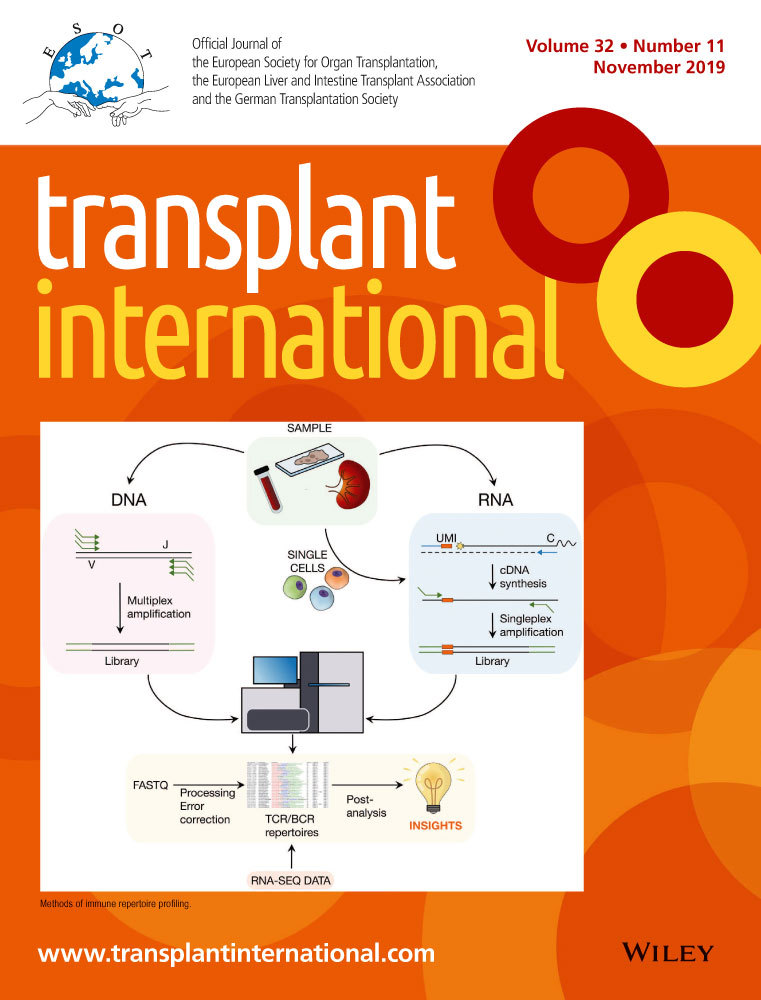Risk factors for and outcomes of delayed graft function in live donor kidney transplantation – a retrospective study
Summary
Delayed graft function (DGF) in deceased donor kidney transplantation is associated with worse outcomes. DGF has been less well studied in live donor transplantation. We aimed to examine the risk factors for DGF, and associations between DGF and short- and long-term outcomes in live donor kidney transplant recipients. Using data from the Australia and New Zealand Dialysis and Transplant (ANZDATA) Registry, we included live donor kidney transplants performed in Australia and New Zealand over 2004–2015 and excluded pediatric recipients (n = 440), pathological donors (n = 97), grafts that failed in the first week (as a proxy for primary non function; n = 38), and grafts with missing DGF data (n = 46). We used multivariable logistic regression to identify the risk factors for DGF and the association between DGF and rejection at 6 months; Cox proportional hazards models to examine the relationship between DGF and patient and graft survival; and linear regression to examine the association between DGF and eGFR at 1 year. DGF occurred in 77 (2.3%) of 3358 transplants. Risk factors for DGF included right-sided kidney [odds ratio (OR) 2.00 (95% CI 1.18, 3.40)], donor BMI [OR 1.06 per kg/m2 (95% CI 1.01, 1.12)]; increasing time on dialysis and total ischemic time [OR 1.09 per hour (1.00, 1.17)]. DGF was associated with increased risk of rejection at 6 months [OR 2.37 (95% CI 1.41, 3.97)], worse patient survival [HR 2.14 (95% CI 1.21, 3.80)] and graft survival [HR 1.98 (95% CI 1.27, 3.10)], and worse renal function at 1 year [Coefficient -9.57 (95% CI −13.5, −5.64)]. DGF is uncommon after live donor kidney transplantation, but associated with significantly worse outcomes. The only modifiable risk factors identified were kidney side and total ischemic time.
Conflict of interest
The authors have declared no conflict of interest.




